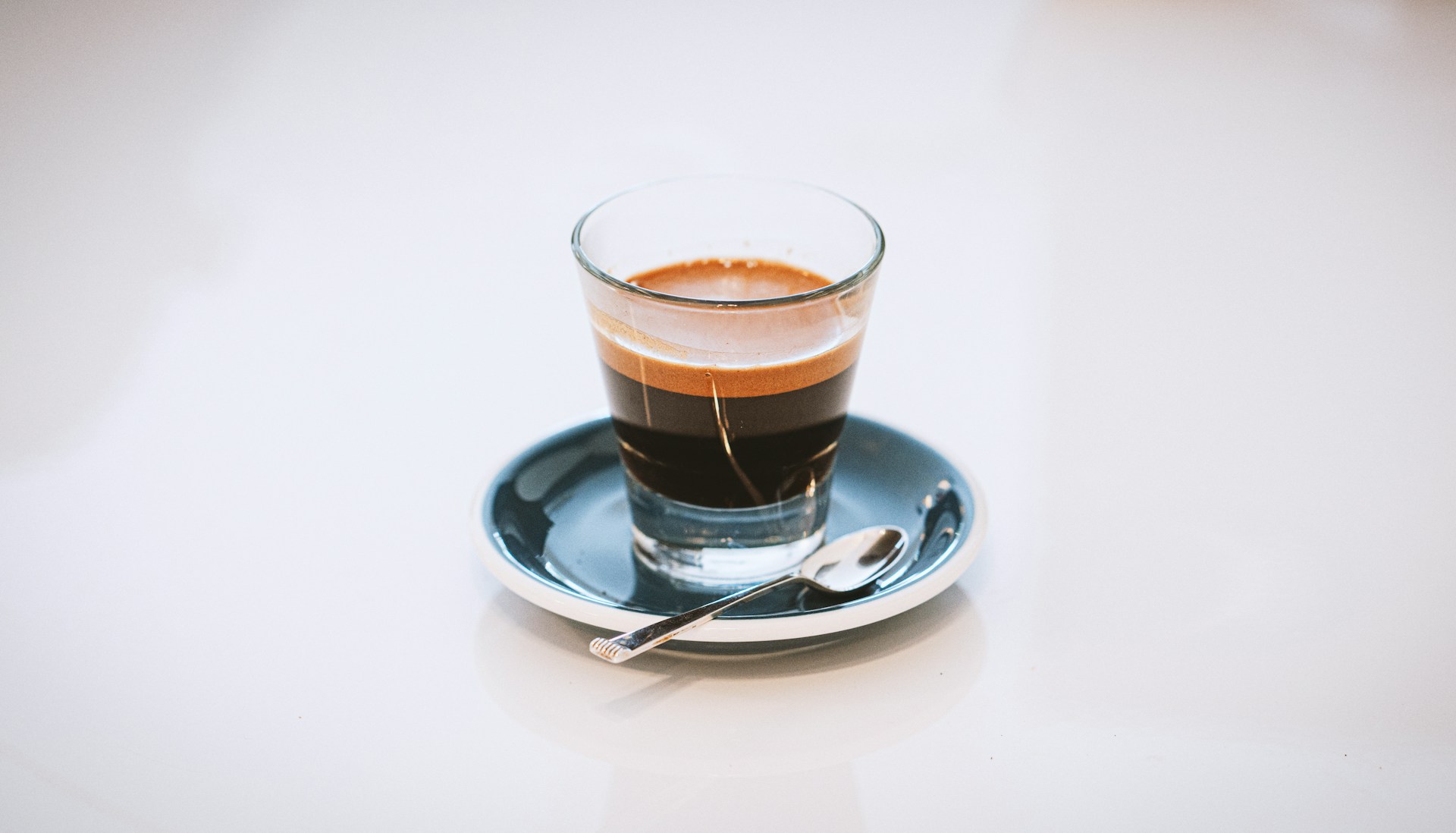If I order plain espresso shots at a coffee shop, I’ll probably order a doppio espresso. A doppio espresso (doppio meaning double in Italian) is the same as a double espresso order. One shot doesn’t seem like enough when ordering espresso shots, yet a triple espresso contains a pretty hefty amount of caffeine. Of course, two espresso shots are a happy medium — hence the doppio espresso order.
A doppio espresso is easy to brew at home, whether using a regular espresso machine or even with a Nespresso (choose double espresso pods). However, I’m much more likely to order a doppio espresso on the go if I need a quick burst of caffeine. Here’s everything you should know about how to order this Italian double shot on your next coffee shop run.
Doppio espresso vs. a regular shot of espresso

In most coffee shops, a regular shot of espresso consists of one liquid ounce and about 64 milligrams of caffeine. While you can certainly order a single shot, be prepared for it to be gone in literally one step. After all, it is only one ounce of liquid! Comparatively, a doppio espresso contains two espresso shots for two fluid ounces. If you take small sips, maybe it’ll last you two sips (or three if you sip slowly).
YouTube coffee expert Coffee Buzz Club defines a doppio espresso as “The drink for anyone who loves the taste of espresso but wishes the drink would last longer. A doppio espresso has the same great taste and the exact ratio of coffee to water as an espresso, but there’s more of it.” The video also highlights that the doppio has become standard in many coffee shops worldwide, as many coffee drinkers find a single shot of espresso too small.
Of course, a doppio espresso has double the caffeine at about 128 mg. This makes it a great option if you want something with more caffeine than a regular cup of coffee, which contains about 80 to 90 mg of caffeine on average. You’ll have more energy when you order a doppio espresso, as this drink can be consumed much quicker. A doppio espresso is made with about 14 to 20 grams of coffee (for about 60 to 80 mL of water).
Order modifications

One thing I love about ordering coffee is being able to customize and modify my order to my liking. A doppio espresso is delicious, mainly if you’re used to the bitter, bold taste when drinking plain espresso. However, if you find a doppio espresso to be too bitter, try ordering a similar order: an espresso con panna. Essentially, this drink order is the same as a doppio espresso but is topped with whipped cream. The light creaminess and sweetness from the whipped cream elevate the taste.
For coffee drinkers sensitive to caffeine or hopping aboard the decaf trend, try ordering a doppio espresso as half decaf. This order contains one decaf shot of espresso and one regular shot of espresso. If you’re ordering straight espresso shots, you probably want the caffeine — but it’s still worth noting.
If you aren’t in the mood for something hot, a doppio espresso can be ordered over ice as another modification. However, the hot espresso poured over ice could lead to a drink that is too watered down. If you’re seeking a cold espresso beverage, an iced Americano may be better for you.
Doppio espresso vs. ristretto

A doppio espresso is often confused with a ristretto, another type you may come across on a cafe menu. The key difference between these two orders is how they’re prepared, as they can appear quite similar visually. A doppio espresso is made with double the amount of water and coffee used in a regular shot of espresso (ratios remain the same).
However, a ristretto shot is much smaller than a standard shot of espresso. At about half the size of a regular shot (around 0.5 fluid ounces), this ultra-tiny shot of espresso is potent and concentrated. Baristas brewing a ristretto shot will use the same amount of coffee used in a regular shot of espresso but use half the amount of water. The shortened extraction time yields a tiny espresso shot with a concentrated, bolder flavor. Since less water is used in the process, a ristretto shot has a less bitter taste than a doppio espresso.
Doppio espresso vs. Americano

If you enjoy a doppio espresso, you might also enjoy an Americano (or an iced Americano). According to YouTube coffee expert Coffee Buzz Club describes it, “The main difference between a doppio and an Americano is the addition of hot water. An Americano is made by pulling a shot of espresso into a glass (6 to 8 ounces) and topping it with hot water. As a result, it has a much less concentrated coffee taste than a doppio espresso.”




